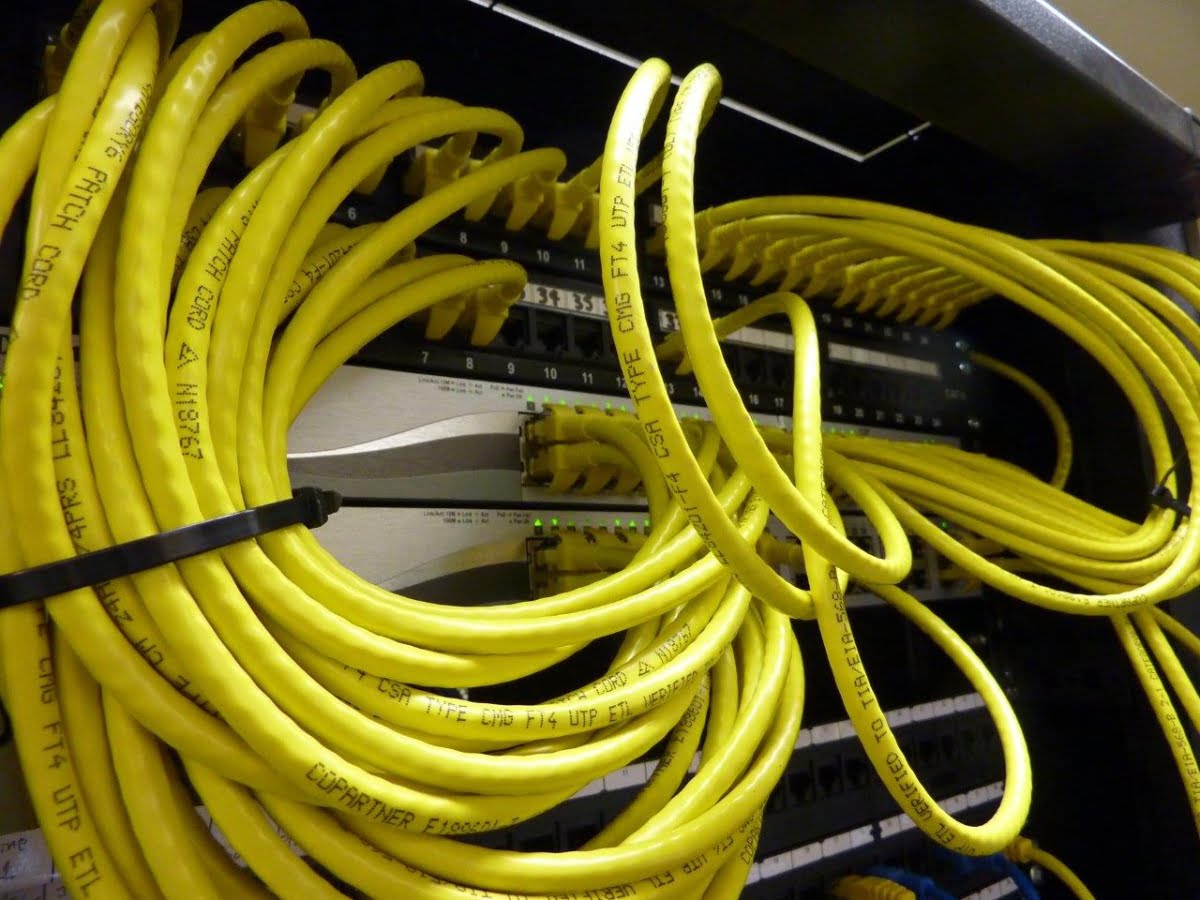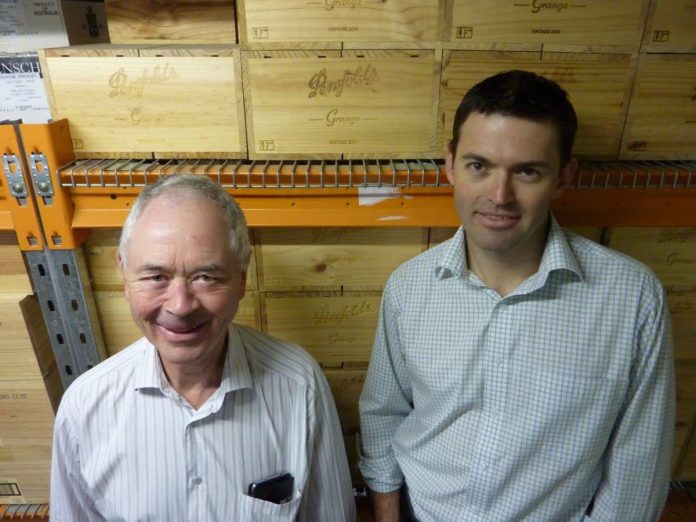Tanksec Solutions has installed a Freedom VMS HD IP surveillance system at BP Slacks Creek Service Centre in Brisbane. This system is integrated with a remote BP service station at Jimboomba, with another site at Grafton in NSW on order and 2 more BP service centres may be integrated in the future.
SERVICE centres like BP Slacks Creek are demanding applications. They have a high risk of drive-off fuel theft and as 24-hour retailers with modest staff levels after hours, shrinkage and staff safety are always a concern. Another key aspect of these sites is that there are significant internal and external surveillance requirements.
Externally, surveillance cameras need to be able to handle backlight, low light and headlights. Cameras also need to offer court admissible images of faces, as well as license plates – front and back. Internally, cameras will again be hit with backlight flooding through vast plate-glass windows and they’ll need to handle faces moving through these challenging areas.
Another issue for cameras is the ability to handle motion blur as customers and vehicles move at right angles to fixed cameras in variable lighting conditions. And supporting the cameras there needs to be a powerful and flexible video management solution – particularly in the case of a growing multi-site application like this one.
Michael Carr operates 5 BP service stations throughout QLD and NSW – including the big, new service centre at Slacks Creek near Loganholme that I visit with Andrew Del Biondo of Camvex and Kristian Fabris from integrator, Tanksec Solutions. The system we are looking at integrates BP Slacks Creek and a remote BP site at Jimboomba, with another BP location at Grafton currently on order. The other 2 sites may be integrated with the system as their existing analogue surveillance solutions require upgrades. But Slacks Creek is the mothership and the existing and future remote sites will all be accessible via Freedom VMS from here.
Having worked in service stations for many years, Michael’s take on the application of CCTV technology is informative. As he explains, the system’s purpose is divided between catching drive-offs (people who fuel up and race away) and protecting the store against, armed robbery, shop lifting and fraud. Given it’s a 24-hour operation with lease customers in the retail food court, there are also issues of staff safety to take into account.
“Originally what happened in our service station business was we’d put in a few cameras pointing at particular key areas but whenever something happened it always happened in a blind spot,” he says. “This new CCTV system covers everything on the site – and we are hoping to continue extending this level of coverage to our other sites as well.
“My long term plan with video surveillance is to facilitate a system that allows managers sitting at their desks to notice a person acting suspiciously and keep an eye on them,” Michael explains. “That’s how we catch shop lifters. Shop lifters are looking at console operators and waiting for them to look away. They don’t know we have someone in the back room watching.
“Having the CCTV system inside the store is a deterrent for theft and fraud. Some people can’t help themselves – that’s the other side of it. Customers and staff can see the quality of the coverage – they know there’s no way they can get up to mischief. And the cameras in the forecourt area get drive-offs.”
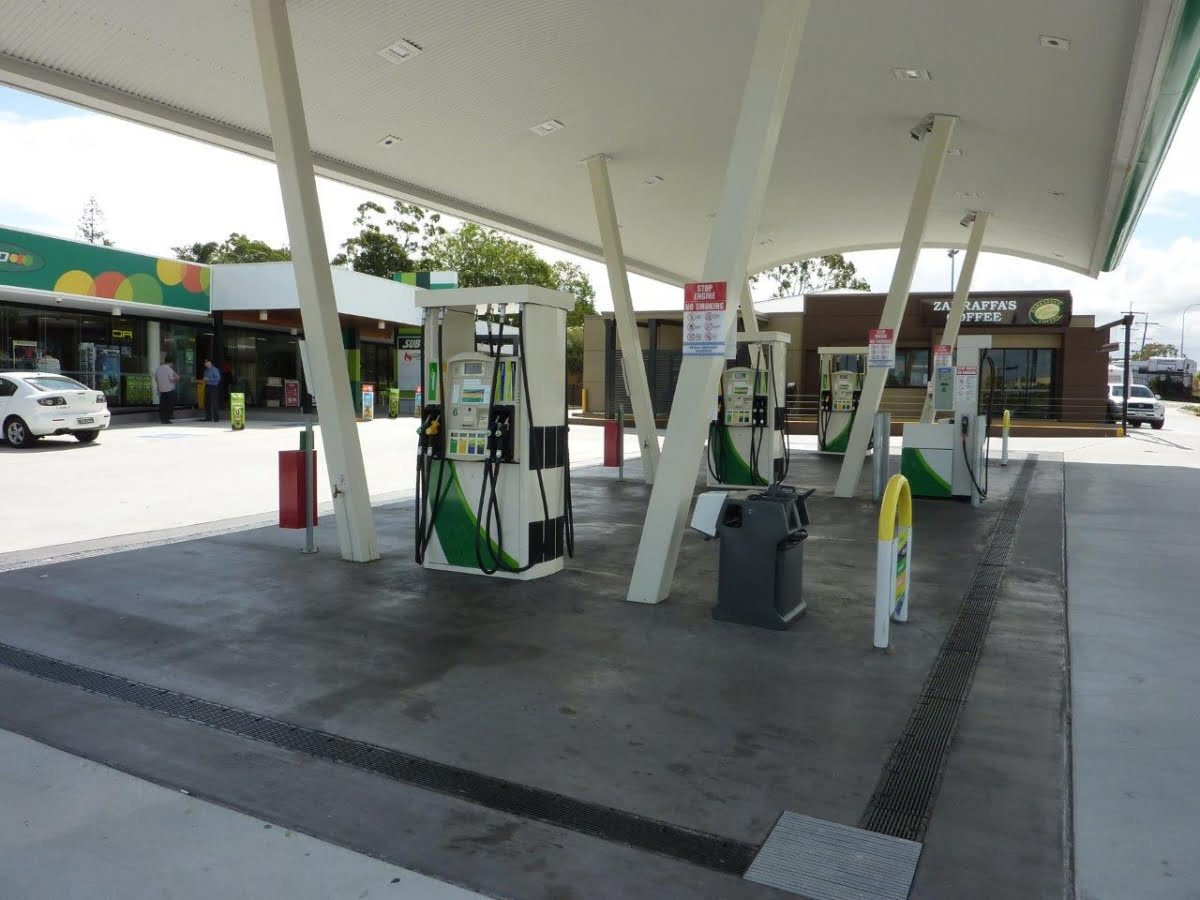
System overview
For a start, this solution is 100 per cent Freedom VMS-certified, which according to Andrew Del Biondo of Camvex, guarantees all components (hardware and software) of the IP video system will perform as specified in the design. Freedom Client and Freedom Server are handling the video management side – with a range of Omega 1080p HD cameras handling vision. Camvex, the Australian Freedom VMS distributor, has certified the design in conjunction with Tanksec Solutions the system integrator. This included providing a data storage unit and server hardware, making for an end-to-end solution.
At the heart of this system is the Freedom Video Management Software (VMS), which carries up to 36 synchronised live HD video displays and recording of 64 cameras per Freedom Pro Server. Freedom is unusual in a number of ways. For a start it is designed, manufactured and supported in Australia. Freedom is also designed to support any CCTV technology out of the box. IP, HD-SDI, analogue, 960H and hybrid across a range of manufacturer brands – there’s no mucking around with any of them. And the key functional element of Freedom is that it leverages eMaps to the full and that changes the way the system is managed, as well as lubricating operation and training.
When it comes to cameras, the Omega range is comprehensive and there are 4 separate IP66-rated PoE Omega models installed at Slacks Creek, including an internal mini dome and external fixed dome, a full body camera and a PTZ with IR. The Omega range uses Sony’s venerable 1/3-inch Exmor CMOS and all these cameras offer 1080p HD. On this site, however, the cameras are running at 720p HD resolution, 6 frames per second at a bit rate of 1920Kbps per channel. Along with fixed cameras outside, there’s a big IR PTZ also running at 720p, 6 frames per second, with a bandwidth of just under 2Mbps.
“We’d put in a few cameras pointing at particular key areas but whenever something happened it always happened in a blind spot”
Monitoring of the system is handled in layers, with live camera views integral to retail sales of fuel – staff check for number plates back and front before authorising the operation of a fuel pump. Management and playback of the system take place at a workstation in the office.
“At this site we have a Freedom client PC at the counter and we are running 2 sessions of the client on that PC, with one session supporting the internal cameras and another session supporting the external cameras,” Del Biondo explains. “We have 6 internal cameras on one monitor and 6 external cameras on the other. A splitter duplicates the monitors so there are 4 monitors at the counter installed in pairs at each point of sale.”
In terms of network architecture, the CCTV system is all IP and there’s a dedicated network for video surveillance with a bridge into the corporate network allowing access to the site’s ADSL connections.
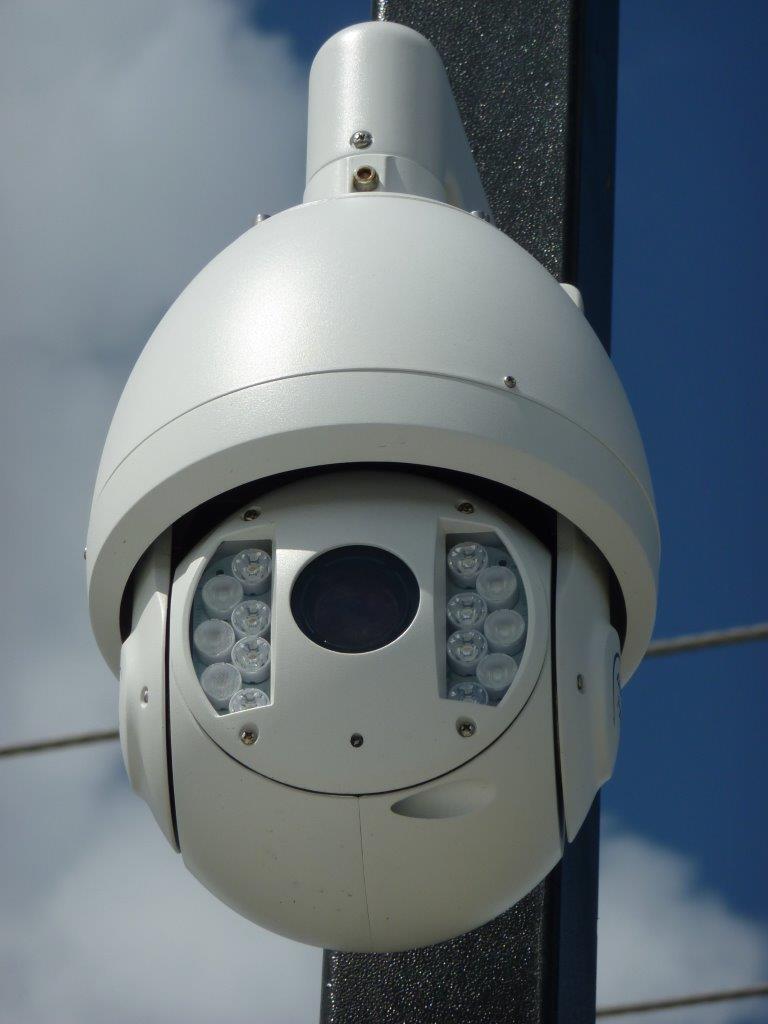
The installation
Parked at a table in the BP Slacks Creek Service Centre food court with our noses in our coffee cups we survey the site. It’s a large site, everything shiny new. There are 5 food retailers working from the food court, while the BP store sits opposite, the 2 spaces separated by a wide walkway. The space is bright with good seeing conditions for cameras – 100 lux or more at the rear wall and more towards the windows. Backlight looks the key challenge in here.
Tanksec Solutions’ Kristian Fabris is second generation security industry – his father Aldo set up Tank Security QLD in 1993 as a provider of safes. Kristian Fabris spun Tanksec Solutions out of the Tank Security QLD business to focus on electronics security integration and he’s been doing good work in South East Queensland for many years. Like a lot of the best integrators, Fabris runs his business from the front, spending most his time on the tools and he has that quiet way about him you often find in craftsmen.
According to Fabris, Tanksec Solutions did the alarm system, the PA system and the video surveillance system at BP Slacks Creek. At the time the installation started, this was a Greenfield site – it was all new cable to the cameras – with all runs being Cat-5.
What was the owner trying to achieve with video surveillance camera system? I ask.
“Michael likes to have a lot of cameras covering absolutely everything at his sites,” Fabris explains. “He wants to be able to see everything – all the fuel lanes – and across the retail area, including the integrated food court, which is leased to third party businesses. This complete coverage allows movements to be followed anywhere.
“This Slacks Creek site is the head office for Michael’s business, which is a franchise of 5 service centres. Michael wants to be able to view remote sites from Slacks Creek and he also wants to run the Freedom client at home and connect to sites through an iPhone app.”
Given it was a Greenfield site, you must have been on site during the build – were there any particular challenges or was it relatively simple?
“We had an electrical company put the conduits in and they also erected the light poles,” Fabris explains. “That was where they stopped. We did all the actual cabling. There were some damaged conduits – as we tried to get cables through certain very tight locations, we found certain conduits were crushed,”
And there are pits along the perimeter for comms?
“There are pits in the garden and on the driveway for our cabling,” Fabris says. “The poles are fixed given their small size. You can access these cameras off a 3-metre ladder if you need to – we installed them from a scissor lift that was here at the time as part of the installation.
“While the site is relatively large, distance was not a big issue. On all these service station sites there is a restricted fuel zone – from the rack in office our cables go to the edge of that zone then around the boundaries. One of the runs is just on 90 metres as it has to go around the boundary to avoid the fuel zone but that hasn’t been an issue. Any cables that are running underground are gel-filled.”
The lighting solution looks good, I point out. There’s plenty of perimeter lighting and additional lighting under the awning covering the pump lanes in the forecourt.
“Yes, that’s right – there’s a lot of light on this site,” Fabris agrees. “In fact, we have got IR on the big PTZ outside but there’s so much light here it doesn’t get dark enough to trigger the IR – that camera stays in colour 24 hours. But we have the ability to continue to get colour even if we do lose a floodlight on the perimeter.”
Andrew Del Biondo says a great strength of the Omega range from the point of view of installers is that is supports remote setup of cameras via Freedom Server or Client and the high level of integration ensures excellent outcomes.
“We do a lot of low light jobs and you can never be sure how much light there is going to be,” he explains. “Because of this uncertainty, one of the most popular models we have is an IR fixed vandal dome with a motorised lens. The beauty of this is that you can do setup via browser or management software – zooming in and focusing – that makes it a lot easier to tweak a camera after installation.
“Once a camera has been installed at a site and you get a feel for conditions, Freedom VMS allows you to play around with the settings,” Del Biondo says. “It’s something you can only do with IP – you can tweak things – turn the IR on and off electronically. In fact, we asked the manufacturer to add this feature for us.”
Fabris says another good feature of Omega HD IP cameras is the ability for scheduling of day and night profiles. This allows completely different camera settings to be applied when lighting conditions differ.
“You can set up the programming of the camera so that at a particular time in the evening it will switch to alternative settings – a different shutter speed, etc – that offers a much better low light image. Next morning, the image settings go back to the day schedule. It means no compromises in performance.”
We take a walk around outside. It’s hot and bright in the Queensland sun – blue sky with a few clouds and no local tree-shade. Plenty of backlight challenges out here. There’s 80,000 lux in the 2pm sun and 18,000 lux under the awning. That sort of big difference in light levels on an external site posed a serious challenge for last gen HD cameras so I’m looking forward to getting in front of the Freedom VMS workstation to see the performance of the Omega cameras in the wild.
Tanksec Solutions used 4 different Omega models to cover the site. There are mini domes, motorised dome cameras, the big IR PTZ and some full body cameras where a longer lens is needed, with one of these mounted on the canopy roof in the forecourt.
“We are covering every driveway, every fuel lane, every entry and exit,” says Fabris. “We worked hard to ensure the system gets cars pulling into the fuel lanes in either direction. Service stations find cars will pull in with a front number plate – they see it from the register and power up the pump. Then they notice a different plate, or no plate on the back.
“That’s what the IR PTZ is doing on the pole there – checking every lane for number plates on the rear of cars. The PTZ also gets a close up of the customer as they pull their car in and get out. They’ve actually got footage of drive offs by individuals and vehicles involved in armed robberies, so the system works. Police said it was the best footage they had ever seen from a service station.”
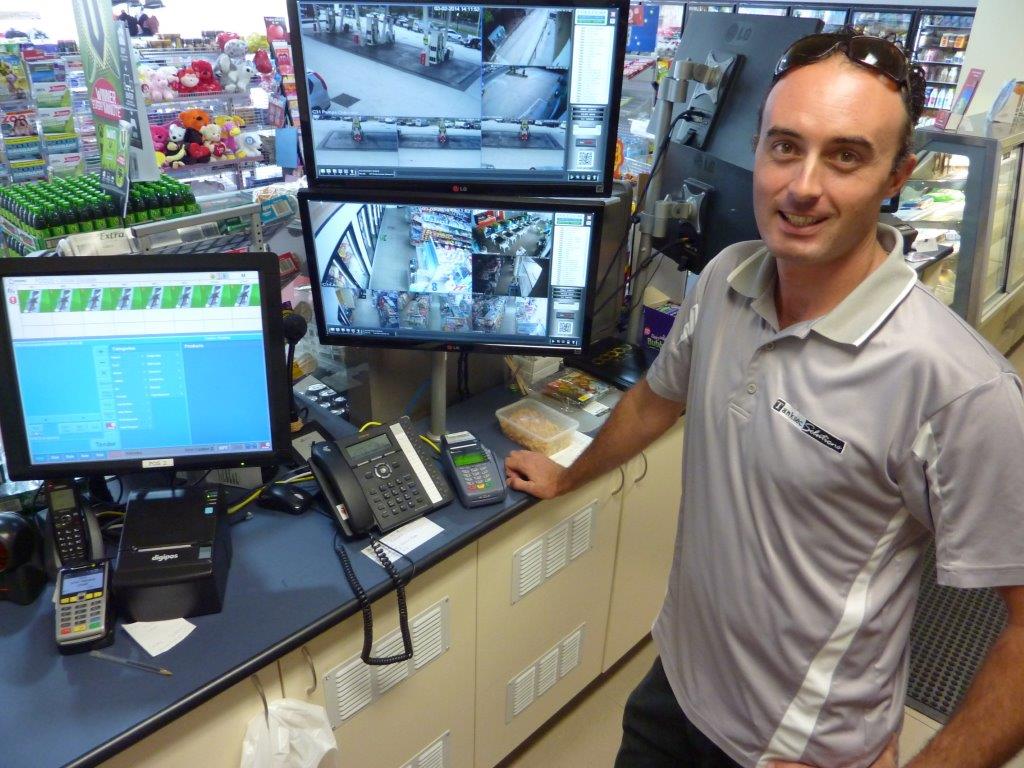
Control room
Governing all these cameras, as well as cameras on the remote site, is the Freedom Server with integrated data storage located in a rack in the office at Slacks Creek. A dual screen monitor setup nearby is connected directly to the Freedom Server.
“There are 32 IP camera licenses in the BP Slacks Creek Freedom Server which can be expanded to 64 if required at $100 per channel,” says Del Biondo, pointing to the rack. “There are 2 PoE switches at the top of the rack. Here are 8 3TB drives for data (a total of 24TB storage), here is the dedicated drive for doing backups, and here are the OS mirror drives that run the operating system and the Freedom software. There is no redundancy on the data drives. That’s so the user can come here and pull the drives and play them off-site using our Freedom Client software. If it was Raid-5 you’d need to take all the drives at once.
“There are 2 monitors connected to the Freedom server – live and recorded video is displayed on the left and this is our eMap on the right. There are 2 eMap displays available for this system. One is the whole site with all external cameras and if we click on this hyperlink it takes us to the eMap of all the internal cameras.”
At the heart of Freedom VMS functionality is eMaps and Del Biondo says leveraging eMaps is what makes Freedom VMS so different.
“A big emphasis we have with any Freedom VMS system – doesn’t matter if it’s entry level analogue DVR, HD-SDI or enterprise IP – is eMaps,” he explains. “All systems should have documentation that shows where all the cameras are and we convert those documents into eMaps.
“Most integrators rarely implement eMaps – they record and if there is an incident, footage is played back. With Freedom, 90 per cent of jobs we do go with the eMaps. When customers see the eMap in operation they realise how much faster and easier it is. It’s very intuitive – there’s no need to learn the site and the cameras are right there all the time.
“What’s different with our eMap implementation is that it works on playback. When you have got camera systems that keep getting bigger and bigger in a site where there are no dedicated security operators, not all operators remember where all the cameras are. With Freedom VMS and eMaps you just drag and drop from the eMap to the display to view playback. Users find it extremely simple to operate – that’s the key to it.”
While we are talking, Fabris has sat down and is running through the system controls and I sit down for a demo of system operation. The eMap screen is showing all the cameras on selectable maps. There’s also a camera tree on the right of the Freedom VMS and you can swoop into that and pull cameras from the tree and onto a viewing tile if that is more convenient. Peering at the eMap on its screen I can see status (streaming) is indicated by the colour of the camera icon on eMap.
“As you can see, Freedom VMS system will come up with all cameras automatically when the software is opened,” Fabris tells me. “An operator can look at all cameras, or at a choice of user defined groups. The system will show on eMap the cameras in a nominated group and different icon colours show which cameras are streaming. If an operator wants to disconnect a streaming camera from the workstation, they can do so with a click. If they want to bring up a camera to stream they just drag from the map and drop on the screen.”
You can get into all the settings of the cameras via the Freedom Server – tweak BLC, WDR, profiles setups, schedules of settings for day or night – all of which makes for easier installation and management. You can also save the config file for a particular camera and upload it to other cameras if there are multiple cameras in the same or a similar location.
And if there’s an event that needs to be investigated, a self-executable player is added to any removable media footage is downloaded to. It allows functions like play, pause, FF, zoom, print, save a still and watermark verification.
Now we look at the camera performance. It’s bloody good. The challenge is backlight and performance is solid. Those Sony sensors have been strong in backlight for 3 generations now and it shows here. The Sony-powered Omegas are seeing through the glass-glare, to the fuel lanes outside in the forecourt. Very strong performance from a $300 1080p HD fixed lens mini dome installed internally. As customers come in through the door Del Biondo points out there is no halo effect around their heads caused by the WDR’s necessarily cranked gain. It’s a nice clear image.
“We’ve adjusted the cameras so there’s no motion blur – I can get what may appear to be a better picture if I don’t optimise camera settings to counter against motion blur but if there’s movement, the standard of the freeze frame stills are compromised,” Del Biondo explains.
Interestingly, though these cameras are running at 6 frame per second,
I’m not getting a sense of losing key information. I’d have guessed the frame rate to be closer to 10fps. Given the nature of the site, this is not entirely surprising. Fast motion – cars or foot traffic moving at right angles – needs full frame rate. But for more static applications 15 frames a second offers a very good flow to the human eye. Now we look at an overhead POS camera. There’s certainly nothing missed at 6 fps as we watch a standard transaction over the counter.
Taking the driver’s seat, Del Biondo guides us through the other cameras in the installation, the external domes, the fixed cameras and the PTZ. Performance in each case is solid. The external scene is more challenging than the internal. The light coloured concrete, the white paint, the windscreens, the fierce glare of the bright day all challenge the cameras. There’s also the shaded area under the awning to take into account and the cameras do a good job of this, I think.
“If we want to go to playback we can select from the list or drag from the eMap – that’s unique to us,” Del Biondo says. “The system will look for footage from today’s date and populate the time bar here. If I want to jump to another time, I just jump there. If I bring up another camera, it will synchronise with this one – great to check adjacent views of an event.
“And here’s the electronic zoom – see how intuitive it is? You use the mouse to make a box and the digital zoom makes that box the full scene, or you can roll the mouse wheel in. And there’s a window bottom half right that shows where you are in the zoom range – both work live and playback.”
“Michael wants to be able to view remote sites from Slacks Creek and he also wants to run the Freedom client at home and connect to sites through an iPhone app”
While there is only one server at Slacks Creek, another has been installed at the Jimboomba site, and that server is integrated as a device on the Slacks Creek Freedom Server. This means operators can be looking at cameras at Slacks Creek live in server mode and then at a click pull up cameras from Jimboomba.
“The remote connection is ADSL less than 1Mbps up and 8Mbps down,” says Del Biondo. “The customer can also run a session of the client on the server and when you connect with the client you can either live view the mainstream, which is recorded and streamed at 2Mbps or sub-stream at 128Kbps. Remote playback supports mainstream or a choice of 3 transcoded profiles (low, medium and high).”
Now we pull up a remote site at Jimboomba to get a feel for that rather narrow upload performance. According to Del Biondo, the system has been defaulted to sub-stream for this site. Each camera has 2 live view streams, one being mainstream (same HD parameters as per recorded stream) and sub-stream (user defined lower resolution and bit rate stream).
“If I right click while viewing sub-stream, I can tell the system to go to mainstream,” he says. “Using the 750k uplink, you get good quality of an event of interest with a lower frame rate. And when not pulled up to full screen – say, viewed as a quad display – the image quality at sub stream is fine for keeping an eye on the site.”
I watch as he runs through the process and while performance would be better with the NBN, the sub-stream is fine for general monitoring with high res stored locally at Jimboomba and available at lower frame rate from our workstation. We also have a look at some footage of a stolen vehicle that did a drive-off and was subsequently used in an armed robbery. According to the boys and BP staff, police were very happy with the footage. The new system identified the driver, the car and showed different number plates on front and back.
“The police got very excited when they see the quality of the images,” said the groups IT manager Scott. “They know our images are superior to other service stations. It’s a big deal for police to get admissible evidence.”
They are great pictures, I say, looking at the screen. And that’s only 720p Del Biondo tells me – “but the bit rate is set properly so picture quality is very good. Too often integrators don’t understand the relationship between matching suitable bit rates to the resolution and frame rate to eliminate compression artefacts”.
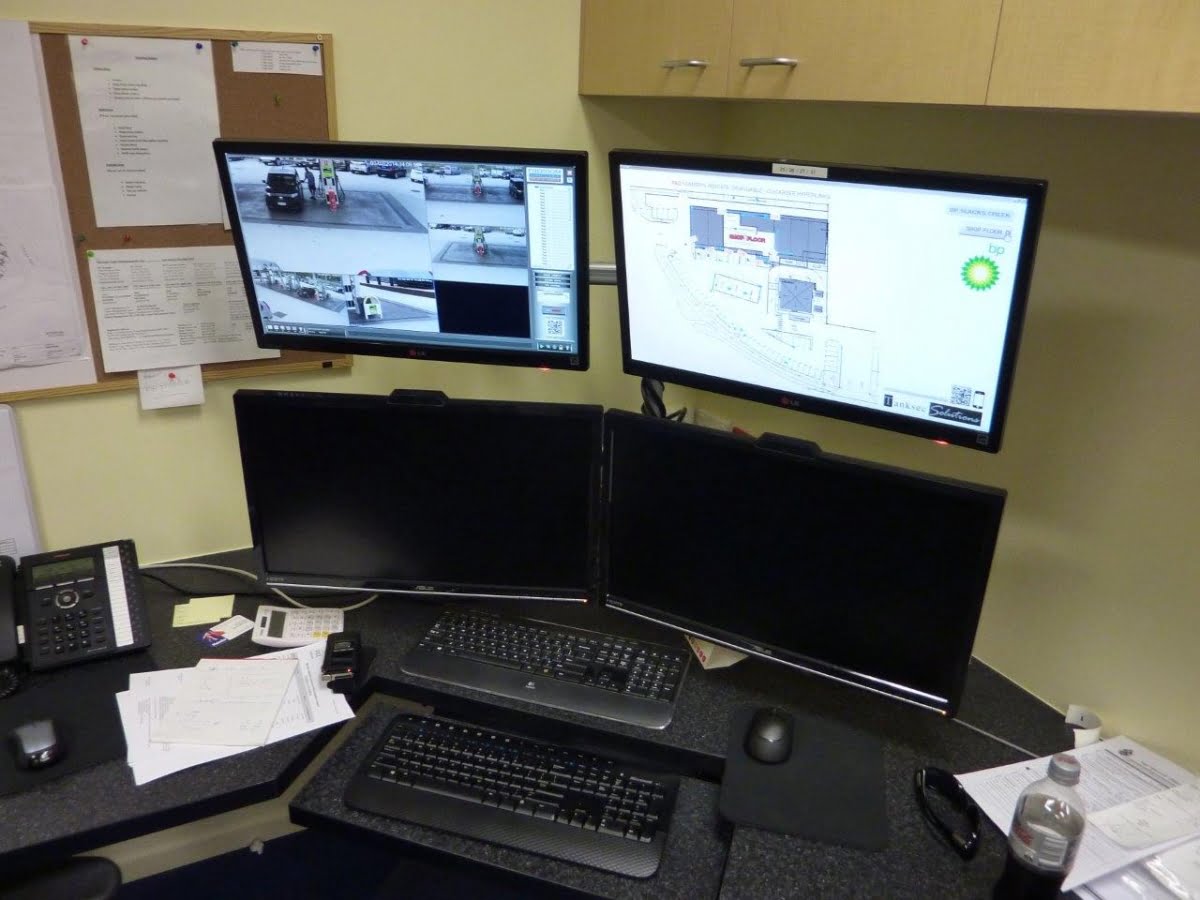
Conclusion
The surveillance installation at BP Slacks Creek is not a huge system but it’s a challenging application that faces clear and present threats and has been used by police to investigate serious crimes. It’s also a multi-site system and the Freedom’s enterprise capability will allow management to continue integrating additional sites into the system, including existing analogue sites, in the future.
“An existing 16 channel analogue system can be integrated into this Freedom VMS from $1,500. This makes it very affordable to unify different CCTV technologies and systems within a common VMS streamlining operation and management for users and integrators,” says Del Biondo.
“When I started with Camvex in 1987 we pioneered the first service station CCTV systems,” Del Biondo tells me. “When servos would ask to put cameras on the pumps I always asked them ‘what are your annual losses in drive offs?’ The annual losses would usually be around $1000. But back then a quality CCD camera cost $1000 uninstalled. We simply could not do these sorts of surveillance systems cost effectively in those days.
“Today, things have changed so much. Equipment is less expensive and with networking, it’s much more flexible. And the camera views are far superior. To get a clear number plate with SD analogue you need the camera to frame up a very limited area,” Del Biondo explains. “But with HD you are getting the entire car, the driver, the foreground and the background.”
Is the end user happy with their new networked surveillance solution?
“Yes – we’ve just installed the same system we have here at Slacks Creek in our Jimboomba site and we’ve ordered another system for a third of our sites – so yes, we’re definitely happy with the system,” Michael says.
“The quality of the footage is great for police. The officers who came to get the footage of the vehicle involved in the armed robbery recently said they would come for footage every time because the quality is so high. They know they will get good information – not blurry number plates. They’ll get the colours of cars.
“We won’t take out a good analogue system to put this IP system in but when the old systems on our sites need replacing we will install this new system and link it to our office here. The analogue systems are ok but this one is just very good. It’s a Rolls Royce of CCTV systems. And prices have come down – that’s a good thing about new technology.”
“A big emphasis we have with any Freedom VMS system – doesn’t matter if it’s entry level analogue DVR, HD-SDI or enterprise IP – is eMaps”
